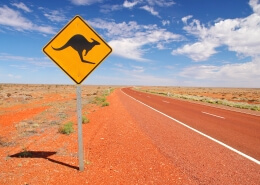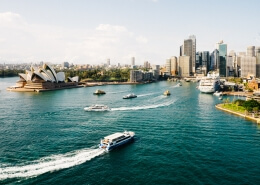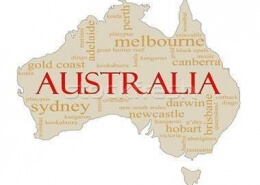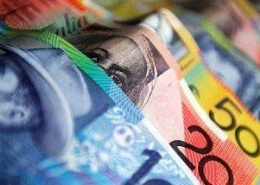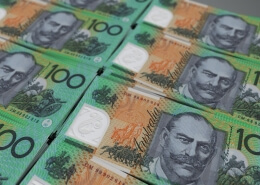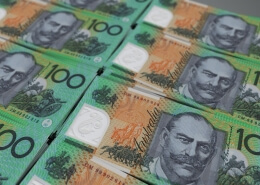GBP/AUD Quarter 2 forecast and economic analysis 2020
It has been one-way traffic lately for GBP/AUD, with sterling making steady gains during the first three months of the year. The high in typical mid-market rates came on 19 March, as the Pound briefly hit 2.078, as the Reserve Bank of Australia (RBA) cut interest rates and agreed to start significant quantitative easing.
GBP-AUD Q1 analysis
The GBP-AUD low of 1.872 came at the start of the year when strong employment figures and rising hopes of a stage one trade agreement between the US and China, which would likely benefit Australia exports. Towards the end of March, the pair is trading just shy of 2.0. The Brexit saga and its effect on the Pound over the last few years and the importance of the US-China Trade talks have been dwarfed by the significant economic measures taken to combat the damage done by COVID-19. During the next quarter, the Coronavirus effects will start to truly hit not only the GBP-AUD currency pair, but also the UK and Australian economies hard. Therefore, the currency markets could be even more volatile.
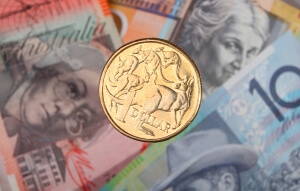
How will Coronavirus impact GBP-AUD in Q2?
With all the political and economic turmoil that Coronavirus is causing around the world, the GBP-AUD is expected to be highly volatile in Q2. It will be important to watch out for any government announcement and any meetings and measures taken from Central Banks from both sides. Here are the latest economic news and announcements that could affect GBP-AUD.
RBA lowers interest rates to counter Coronavirus damage
To combat the economic damage done by the Coronavirus, in line with other central banks, the Reserve Bank of Australia (RBA) has lowered its cash rate by 25 basis points to 0.25% and introduced significant quantitative easing. RBA Governor, Philip Lowe states:
“With this decision today, the policy rates set by the Reserve Bank of Australia, the United States Federal Reserve, the Bank of England and the Reserve Bank of New Zealand are all effectively at ¼ per cent. Each of us are using all the scope we have with interest rates to support our economies through a very challenging period.”
The Coronavirus has brought about major disruptions not only to GBP-AUD, but also to economic activity across the world. This is likely to remain the case for some time yet as efforts continue to contain the virus, he says:
Will the Australian economy recover?
RBA Governor, Philip Lowe is confident that the Australian economy will recover:
“The primary response to the virus is to manage the health of the population, but other arms of policy, including monetary and fiscal
policy, play an important role in reducing the economic and financial disruption resulting from the virus. At some point, the virus will be contained and the Australian economy will recover. In the interim, a priority for the Reserve Bank is to support jobs, incomes and businesses, so that when the health crisis recedes, the country is well placed to recover strongly.”
The cash rate will only be increased when “progress is being made towards full employment” and inflation is sustainably within the 2-3% target band.
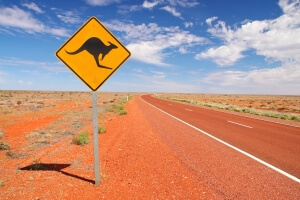
What measures is the government and RBA taking to protect the economy against Coronavirus?
To keep to the 0.25% target on three year Australian Government bonds, the bank will buy as many as is needed. It also launched a three-year funding facility of at least $90 billion, so banks could provide credit facilities for small and medium-sized businesses. “Australia’s financial system is resilient and well placed to deal with the effects of the Coronavirus. The banking system is well capitalised and is in a strong liquidity position. Substantial financial buffers are available to be drawn down if required to support the economy. Together, these measures will support jobs, incomes and businesses through this difficult period and they will also assist the Australian economy in the recovery,” the Governor says.
How will the Government of Australia support individuals?
The Government of Australia has unveiled two rounds of fiscal stimulus worth $84 billion to offset damage done by the effects of the Coronavirus – with more aid likely to follow. It initially announced $17.6 billion in aid and then pledged an extra A$66.4 billion.
The measures are aimed to support individuals in need, small and medium-sized businesses in the face of enforced closure and trading and travel restrictions and to save jobs. Under the new plans eligible small and medium sized businesses can obtain cash payments of up to $100,000, extending the $25,000 payments in the first round of financial support. A loan scheme of up to $250,000 over three years will be created for eligible businesses through approved lenders.
Combined with Reserve Bank measures to free up funds for lenders, the spending comes to a massive $189 billion, or the equivalent of almost 10% of Gross Domestic Product.
Prime Minister Scott Morrison says:
“We will be focusing on those in the front line, those who will be feeling the first blows of the economic impact of the coronavirus. There will be more packages and more support. He adds, “There is a lot of pain coming but we’re going to cushion the blow as best we can.”

GBP-AUD to grow as Coronavirus could bring about rare Australia recession
As businesses are forced to close or scale back operations and jobs are lost, the effects of the Coronavirus could see Australia enter its first recession for 29 years, it is feared, and GBP-AUD will be dependent on this, too.
Gross Domestic Product (GDP) is predicted to fall 0.4 percentage points in the first three months of the year and 0.3 percentage points in the second quarter, says a Bloomberg Economics report. This would see an end to Australia’s record economic expansion.
Similar predictions have come from Westpac Banking Group. However, there are hopes that the Australian economy will bounce back in the second half of 2020, as the effect of the Coronavirus weakens.
UK ‘initial Coronavirus impact greater than financial crash’
The initial damage done to the UK economy by the Coronavirus crisis is greater than that from the Global Financial Crash, say market experts. In March 2020 the IHS Markit/CIPS private sector Purchasing Managers’ Index (PMI) plummeted to a record low of 37.1, down from 53 in February. The break-even point is 50. And that is before the UK Coronavirus business restrictions began.
The report says, “March data highlight that the COVID-19 outbreak has already dealt the UK economy a more severe blow than at any time since comparable figures were first available over 20 years ago. The combined monthly decline in output across manufacturing and services exceeded that seen even at the height of the global financial crisis, with the IHS Markit/CIPS Flash Composite PMI falling almost 16 points since February 2020. A rapid decline in business activity across the service economy led the overall downturn in March (index at 35.7) as emergency public health measures to halt the spread of coronavirus caused demand to slump.
Moreover, the latest PMI (Purchasing Managers’ Index) figures were compiled in advance of the UK government’s decision to order pubs, restaurants and other leisure businesses to close by midnight on 20th March.” In addition, at 35.7 in March, down from 53.2 in February, the seasonally adjusted IHS Markit/CIPS Flash UK Services PMI Business Activity Index slumped to its lowest level since the series began in July 1996.
“With measures to halt the spread of the Coronavirus causing footfall to slump, by far the steepest downturns in activity were signalled by hotels and restaurants and other leisure activities such as sports centres, gyms and hair salons.”
Chris Williamson, Chief Business Economist at IHS Markit, concludes:
“The surveys highlight how the COVID-19 outbreak has already dealt the UK economy an initial blow even greater than that seen at the height of the global financial crisis. With additional measures to contain the spread of the virus set to further paralyse large parts of the economy in coming months, such as business closures and potential lockdowns, a recession of a scale we have not seen in modern history is looking increasingly likely. Historical comparisons indicate that the March survey reading is consistent with GDP falling at a quarterly rate of 1.5-2.0%, a decline which is sufficiently large to push the economy into a contraction in the first quarter. However, this decline will likely be the tip of the iceberg and dwarfed by what we will see in the second quarter as further virus containment measures take their toll and the downturn escalates.”
Where has the UK economy grown during Coronavirus?
Any growth was confined to small pockets of the economy, including food manufacturing, pharmaceuticals and healthcare. Demand elsewhere has collapsed, both for goods and services, as increasing numbers of households and businesses at home and abroad close their doors, says the report. On top of a £30 billion package of measures introduced by Chancellor Rishi Sunak in the March UK Budget to boost the economy and lessen the effect of the Coronavirus crisis, another £350 billion emergency rescue package was added – the equivalent of 15% of the economy. The package included £330 billion of loan guarantees, including £10,000 grants for the UK’s smallest companies and mortgage relief for homeowners in difficulty. Then, separate measures have been announced to support the self–employed through a taxable grant worth 80% of their average monthly profits.

The maximum claim allowed is up to £2,500 a month. It will be paid in a lump sum, from the start of June. British Prime Minister, Boris Johnson says, the country is at war against COVID-19. “We must act like any wartime government and do whatever it takes to support our economy. This enemy can be deadly, but it is also beatable.” The economy would be supported “whatever it takes”. “The coronavirus pandemic is a public health emergency. But it is also an economic emergency. We have never, in peacetime, faced an economic fight like this one. But we are well prepared. We will get through this.” The move briefly saw GBP-AUD hit a 10-year high of 2.08 in typical mid-market rates, before quickly falling back.”
What will happen to GBP-AUD in Quarter 2?
The GDP predictions for Quarter 2 already look dire for both the UK and Australian economies brought low by the effects of the Coronavirus. The currency markets will be watching economic and business developments closely, as the countries decide how best to support business and when the time is right to start easing restrictions. With so much at stake and an increased risk of currency fluctuations between GBP-AUD, keep in touch with your Halo Financial Currency Consultant for the latest guidance.
GBP-AUD: Guidance for AUD buyers
The exchange rate has broken the 2.0 level, which has been supported by commodity based currency weakness as the world comes to grip with coronavirus and its implications on global growth. Grab opportunity while it presents itself, 2.07 is the next level to target. While covering off at 2.01 should be considered.
GBP-AUD: Guidance for AUD sellers
Unfortunately it’s a buyers’ market a present. Support for commodities will pick up again. Sellers should target 2.00 for the short term, if that is broken through a lower level of 1.9200 will be one to watch
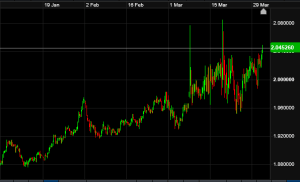
Pick your currency, check the rate
✓ Award-winning service ✓ Secure bank transfer ✓ Peace of mind

